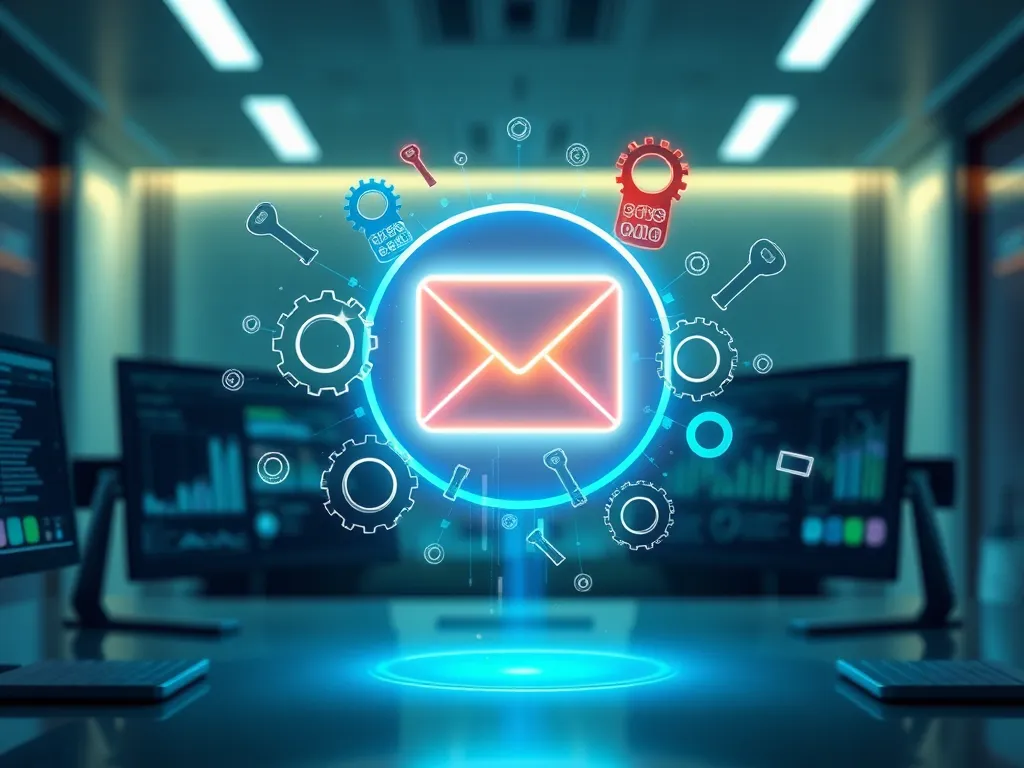Unlocking Success with a Cold Email Service: Tips & Tricks

Understanding Cold Email Service: A Comprehensive Guide
A cold email service is a powerful tool designed to facilitate outreach efforts by allowing businesses to send targeted emails to potential clients or leads who have not previously interacted with them. This method of communication plays a significant role in the world of sales and marketing, helping to bridge the gap between unknown prospects and valuable business opportunities. By leveraging advanced technology and automated processes, cold email services are essential for businesses looking to expand their reach in a cost-effective manner.
Essentially, a cold email service streamlines the process of sending personalized emails to a large number of contacts, enabling businesses to initiate conversations that could lead to fruitful relationships. Cold Email Services come equipped with features such as email tracking, response templates, and analytics that provide insights into the performance of each email campaign. These features are instrumental in understanding recipient behavior, allowing for more effective engagement strategies.
In today’s competitive business environment, utilizing a cold email service is not just an option; it is vital for sustaining competitive advantage. It allows businesses to scale their outreach efforts while ensuring that messages remain tailored and relevant to recipients. This personalized approach increases the likelihood of engagement and conversion, as potential customers feel more valued when they receive communications that resonate with their specific needs or interests.
Utilizing a reliable cold email service can significantly enhance your outreach efforts and drive meaningful engagement.
Furthermore, the rise of automation means that cold email services can save valuable time for sales teams who would otherwise be bogged down in repetitive tasks. Instead of manually sending each email, businesses can automate the process, continually engaging with potential customers even during periods of high demand or busyness. This dynamic not only enhances productivity, but also leads to higher quality lead generation processes overall.
Finally, with the right cold email service, businesses can significantly improve their data management and contact organization, allowing them to maintain a healthy pipeline of leads without the chaos of scattered information. As cold emailing continues to evolve, understanding its basic principles through dedicated services is crucial for any business aiming to thrive in the digital marketplace.
Benefits of Using a Cold Email Service
One of the most significant benefits of using a cold email service is its ability to increase the reach of your marketing efforts. By sending targeted emails to a broader audience, businesses can expand their customer base significantly. Cold email services allow users to segment their audience and focus on specific demographics, ensuring that the right messages reach the right people at the right time. This targeted approach not only improves engagement rates but also increases the potential for conversions.
In addition to increasing reach, cold email services bring remarkable time efficiency to email outreach. Automation features enable users to set campaigns in motion without the need for constant manual input. This allows marketing and sales teams to concentrate on crafting compelling content and refining their strategies while the service handles the repetitive aspects of sending and tracking emails. As a result, teams can achieve more effective results in less time, creating a streamlined workflow that enhances productivity.
Cost-effectiveness is another appealing aspect of cold email services. These solutions generally come with affordable pricing models, making them a budget-friendly marketing option for businesses of all sizes. Compared to traditional marketing strategies, such as direct mail campaigns or paid advertising, cold emailing stands out for its lower costs while still offering impressive reach and effectiveness. This enables startups and smaller companies to compete with larger organizations without requiring substantial marketing budgets.
Moreover, cold email services can lead to higher response rates when used correctly. By crafting engaging emails that resonate with recipients, businesses can see significant improvements in reply rates compared to standard marketing approaches. Personalization, storytelling, and clear calls to action can transform an ordinary cold email into a compelling invitation that entices potential customers to engage with your offerings.
Best Cold Email Services Available
With various cold email tools available in the market, businesses need to conduct a comparative analysis to find the best options that suit their specific needs. Popular services such as Mailchimp, Hunter, Outreach, and Lemlist offer a variety of features including list management, sequencing, and analytics. Each platform has its unique advantages, ranging from user-friendly interfaces to advanced tracking capabilities, and selecting the right service can greatly influence the success of email outreach campaigns.
Understanding the pricing plans associated with different cold email services is essential for effective budgeting. These services often provide tiered pricing structures based on the number of contacts, sending limits, or additional features. Offering both pay-as-you-go and subscription-based models, many cold email services cater to diverse business sizes and marketing objectives, ensuring that every organization can find a suitable solution without exceeding financial constraints.
User experience is a crucial factor when choosing a cold email service. A platform that is intuitive and easy to navigate will reduce the learning curve for users and enable teams to get straight to work. Many top cold email services provide demo accounts or free trials, allowing potential users to evaluate usability and functionality before committing to a subscription. Exploring user feedback and client reviews can also provide insight into a service’s performance and ease of use.
Customer support cannot be overlooked when selecting a cold email service. Reliable help resources, including live chat, email support, and comprehensive knowledge bases, ensure that users can receive assistance when they encounter challenges. Quick access to customer support is essential for troubleshooting potential issues that may arise during email campaigns, making it easier for businesses to maintain productivity and achieve optimal results from their outreach efforts.
Strategies for Effective Cold Emailing
Personalization techniques are key to sending effective cold emails. Tailoring messages to different recipients according to their industry, interests, or previous interactions can foster a sense of connection and relevance. By addressing the recipient directly, referencing personalized details, or offering tailored solutions, businesses can significantly improve the impact of their cold emails and create a foundation for fruitful relationships.
Follow-up sequences play a vital role in cold emailing strategies. Many recipients may not respond to the initial email; hence, planning timing and frequency for follow-ups is crucial. Following up at carefully considered intervals can help reignite interest without being overly aggressive. Crafting tailored follow-up messages that reference previous communications or provide additional value can further increase the likelihood of engagement.
Subject line optimization is another area to focus on when developing cold email strategies. Crafting enticing and relevant subject lines is essential to capturing a recipient's attention amidst their crowded inbox. Experimenting with different formats, using actionable language, or creating a sense of urgency can enhance open rates, encouraging recipients to engage with the content of the email.
Lastly, a strong call to action (CTA) is imperative in cold emailing strategies. Designing effective prompts encourages engagement and guides recipients toward the desired action, whether that’s scheduling a meeting, visiting a website, or replying to an email. Clear and straightforward CTAs that create an incentive for action can significantly influence the outcomes of email outreach efforts.
Common Mistakes in Cold Emailing
One significant pitfall in cold emailing is the tendency to send overly generic emails. A lack of personalization can make recipients feel like just another name on a list, leading to lower engagement rates and diminished trust. To avoid falling into this trap, businesses should invest time in researching their target audience, crafting tailored messages, and leveraging personalization techniques to enhance communication.
Additionally, ignoring regulations related to cold emailing can lead to serious consequences. Understanding GDPR and CAN-SPAM laws is crucial for compliance and can help avoid fines or penalties. Businesses must ensure they include accurate sender information, provide an unsubscribe option, and only target recipients who have opted into receiving emails, upholding ethical practices in outreach campaigns.
Neglecting follow-ups can be another costly mistake in cold emailing. Many recipients may overlook the initial email or require additional reminders to generate interest. Businesses should establish follow-up sequences to maintain momentum, nurturing leads and encouraging response rates over time. A persistent yet polite approach often yields better results than giving up after one contact attempt.
Finally, failing to track results is counterproductive when conducting cold email campaigns. Monitoring metrics such as open rates, click-through rates, and response rates is essential for measuring email effectiveness. By evaluating performance through analytics and making data-driven adjustments, businesses can continually improve their email strategies and enhance overall campaign success.
Measuring Success with Cold Email Campaigns
Measuring success in cold email campaigns involves understanding key metrics that provide insight into performance. Open rates indicate the percentage of recipients who opened the email, while click-through rates measure how many engaged with links within the email. Response rates assess direct replies from recipients, providing a comprehensive view of campaign efficacy. Monitoring these metrics helps businesses grasp what resonates with their audience and refine their strategies accordingly.
Tools for analytics play a vital role in tracking email performance. Many cold email services come equipped with built-in analytics features that provide valuable insights into recipient behavior, such as how long emails are viewed or which links are clicked. Additionally, third-party tools can supplement these analytics, offering deeper data visualization and segmentation capabilities that empower businesses to make informed decisions based on their email campaigns’ effectiveness.
A/B testing is an essential practice for optimizing cold email strategies. By experimenting with different variables, such as subject lines, email content, or sending times, businesses can identify what yields the best results. A/B testing allows for a methodical approach to refining emails until they achieve the highest engagement and conversion rates possible.
Finally, feedback collection is a crucial component for measuring success in cold email campaigns. By reaching out for responses or insights directly from recipients, businesses can gather valuable information that informs ongoing improvement. Utilizing recipient responses not only enhances future outreach efforts, but it also cultivates stronger relationships by demonstrating that the business values client opinions.
